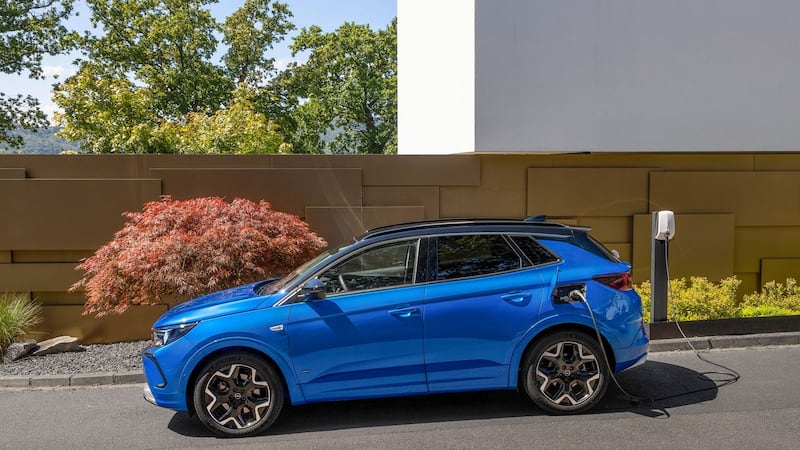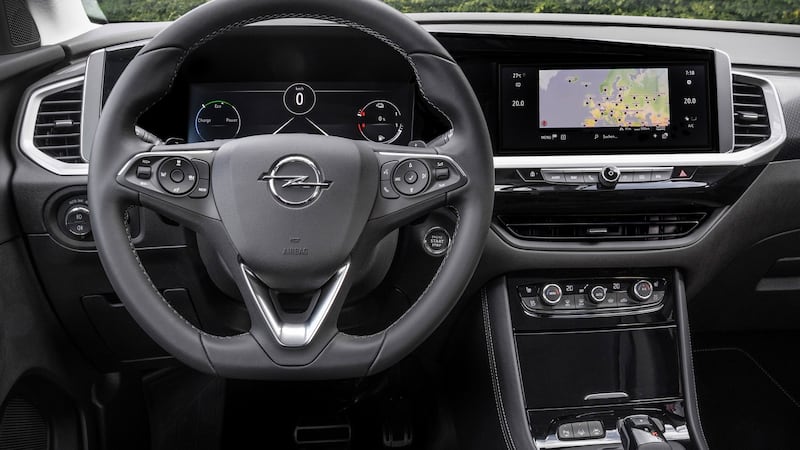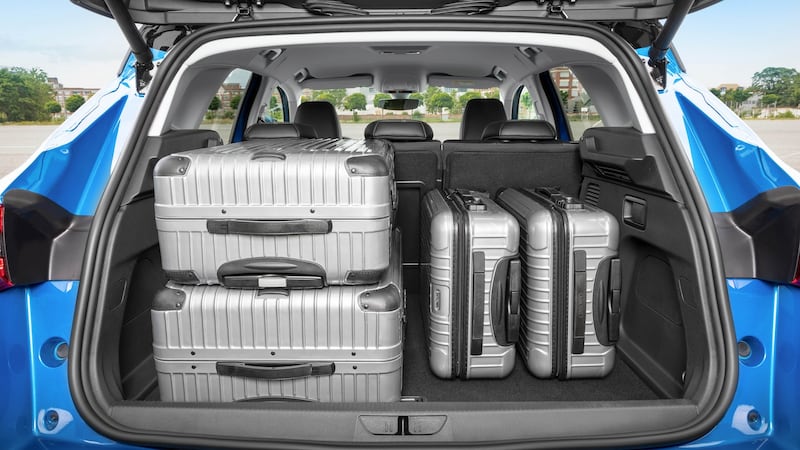The Opel Grandland X was launched in 2017 and has since gone on to sell 300,000 units across Europe. It's Opel Ireland's second-best selling car right now behind the ubiquitous Corsa.
I mention this because… well, because it might have been easy not to have noticed. That original Grandland X kind of slid into the market almost without anyone noticing it; a car apparently designed to be the wheeled equivalent of Easy Listening – high on competency, but low on excitement.
In that sense, it was a typical product of Opel under its previous owners, the American giant General Motors. That first Grandland X was also the first product of a tie-up with PSA Peugeot-Citroen, which would see Opel and the two French brands share chassis and engines for some models.
Now, here we are, four years later and Opel has long since slipped away from GM as it retreated from Europe, finding an apparently far happier home initially as part of the PSA Group, and latterly as part of the Stellantis mega-corp, which was formed when PSA merged with Fiat Chrysler. Opel has found a new home in Ireland, too – at the same Gowan Distributors which has for years managed Peugeot, and which has recently reclaimed Citroen and DS too.
Under PSA and Stellantis, Opel has stemmed its once apparently-unstoppable losses in Europe (doubtless helped by a deal which saw GM take on responsibility for Opel’s legacy pension costs) and, with a more focused model range, it’s now happily turning profits for the first time in a generation.
For the Grandland, that means it’s time for a refresh – with Opel promising to go all-electric by 2028 in Europe, it also means that there’s a limit to what can be refreshed. After all, there’s not much point in investing in new engines or other major changes if you’re planning to go all-battery in the next few years, so the Grandland (now shorn of its previous ‘X’ suffix) is sticking with the same engine lineup as before.
That means you’ll have a choice when the new Grandland arrives in Ireland in November of a 1.2-litre 130hp petrol engine, a 1.5-litre diesel (also with 130hp), and a pair of plug-in hybrids. There won’t be an all-electric version.
Of that pair of plug-in hybrids, both were previously available in the old Grandland, but the more affordable front-wheel drive model was launched essentially in the middle of lockdown, so it may well have been overlooked by car buyers (and certainly by road-testers sitting at home and twiddling their thumbs…). Now, the top-spec 300hp four-wheel drive Hybrid4 model will be available to special order only, while the front-wheel drive, 224hp Hybrid model will be the key version for Irish buyers.

The biggest change that you’re going to notice from the outside of the Grandland is, of course, it’s new nose. It gets the black-panelled “Vizor” face, already seen on the smaller Mokka and Crossland crossovers, with slim LED lights at the outer edges. It’s a neat look, and far more distinctive than the Grandland’s older “face” but you can still tell that it’s been essentially stuck on to an existing shape – it’s not as well-integrated into the overall design as that of the Mokka (but better, by far, than that of the Crossland).
There have also been some minor styling tweaks around the back, the addition of body-coloured slide cladding (which makes the Grandland look a touch chubby – you might prefer the gloss-black cladding which comes with SRI models which makes it look a bit slimmer), and a new interior.
That interior gets Opel’s “Pure Panel” digital cockpit, which consists of two screens – basic models get a seven-inch instrument panel and a seven-inch infotainment screen, but that will look pretty plain and unappealing.
Everything bar the base version gets a 10-inch screen in the centre, and a 12-inch screen in front of the driver, and that’s far more satisfying, verging on classy. Opel has definitely given the Grandland a dose of improved cabin quality, but some cheap surfaces remain, especially around the lower halves of the door panels and the centre console.
On the upside, the front seats are excellent – firm, but supportive and very comfy – and there are simple physical controls for heating, ventilation and air conditioning. Space in the back is fine (although subjectively less impressive than the rear accommodation of the closely-related Citroen C5 Aircross) and the boot, although a roomy 514 litres on basic petrol and diesel models, shrinks to a barely-adequate 390 litres for the hybrids.
Still, that lower-level hybrid could be the pick of the new Grandland range. The 1.2-litre petrol has the familiar, eager, and willing three-cylinder turbo, but it can get a little aurally raucous if you press it hard enough. Diesel is still popular with Irish buyers, and the 1.5-litre engine has impressive all-round performance, but it’s hardly in keeping with the zeitgeist. The 300hp Hybrid4 is possibly too pricey for any but the most well-heeled family buyers, which leaves the Hybrid version as last Grandland standing.

With prices likely to hover about €41,000 (depending on how the October budget shakes out, and Opel Ireland isn’t saying anything more about pricing until after the Minister has sat back down) that means it’ll offer reasonable value for money, and it’s the sweetest of the quartet to drive.
Overall refinement is excellent, and with a WLTP range of 64km on a fully-charged 11.3kWh battery, it should be able to tackle most people’s commutes without resort to petrol power. When you do need to use the petrol engine, it should prove generally economical – we managed to squeeze 5.5 litres per 100km from it over a short, but hilly, test drive loop.
With 360Nm of torque, there’s plenty of poke for motorway work too, although that comes with the caveat that fuel economy will likely plummet to between 6.0 and 7.0-litres per 100km, even if you’re being gentle. The usual other plug-in hybrid caveats apply too – chiefly being that to make the most of them you need a driveway and a home charging point, but if you have those maybe you should just be looking at a fully electric car?

To drive, the Grandland remains at the more vanilla end of the spectrum. It lacks the related Peugeot 3008’s punchy steering response, and the Citroen C5 Aircross’ pillowy suspension, treading a middle ground between the two. A comfortable middle ground? Well, maybe – most family buyers will probably be happy enough with how it drives, but it would be nice to feel a little more enthusiasm through the corners.
In the end, the Grandland is still playing an Easy Listening kind of vibe. It's rather like switching your Spotify playlist from Harry Connick Junior to Barry Manilow – the nose is more arresting, but there's nothing here that's going to overly offend, nor thrill.
Opel Grandland Hybrid 224hp PHEV: the lowdown
- Power 1.6-litre petrol engine + 82kW electric motor putting out 224hp and 360Nm of torque with an eight-speed automatic transmission and front-wheel drive. CO2 emissions (annual motor tax) 21-49g/km (€140).
- L/100km (MPG) 1.3-1.8 (217-156)
- Electric range 64km
- Electric consumption 15-17.5kWh/100km
- 0-100km/h 8.9 seconds
- Price From €41,000 (approx) as tested
- Verdict: Not thrilling, but solid and capable of nosing its way into your affections.












